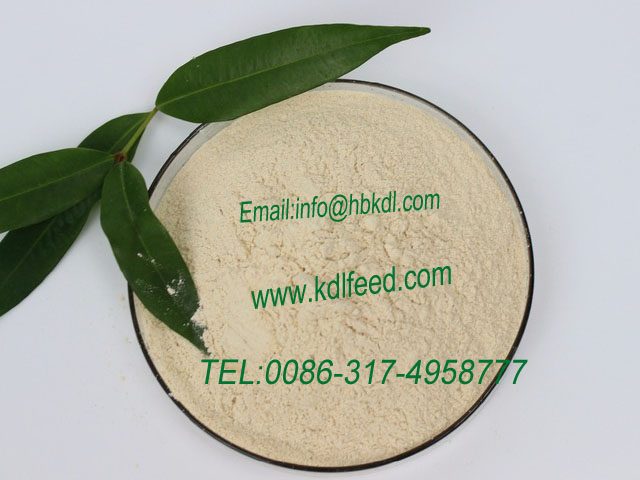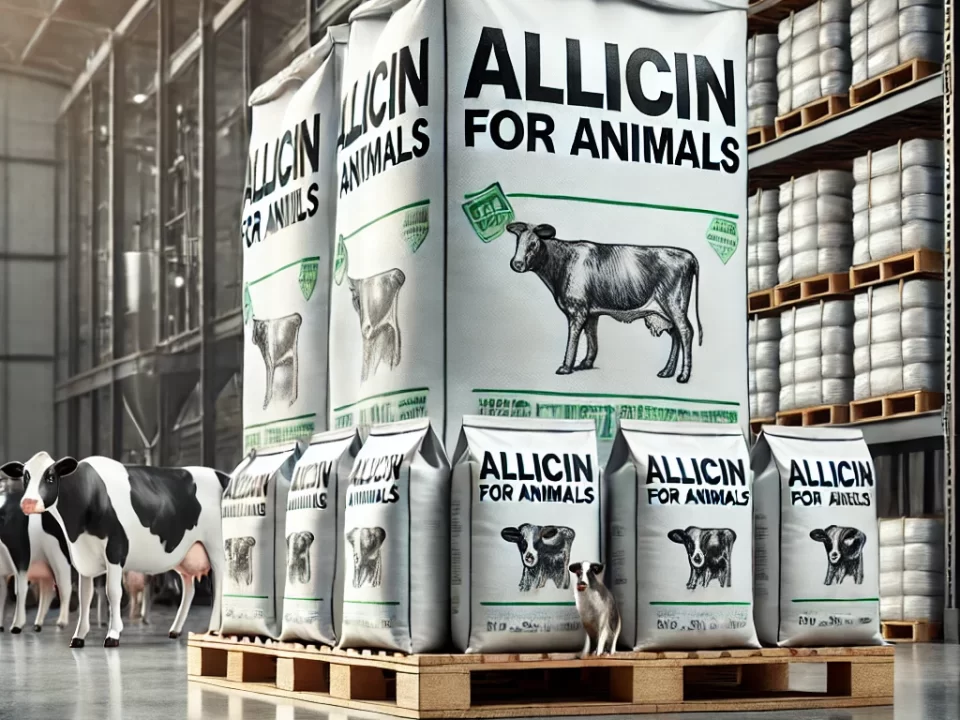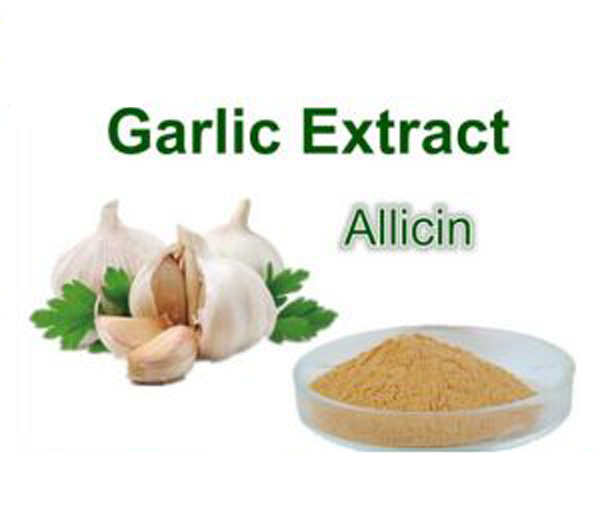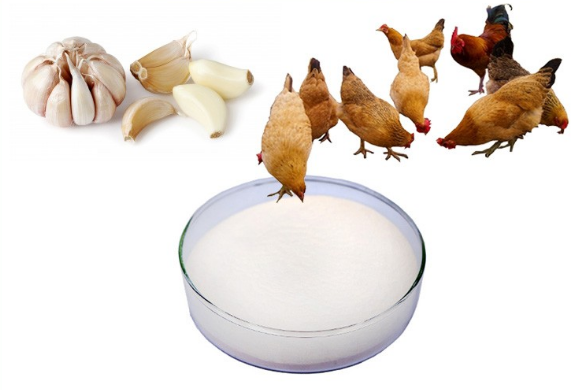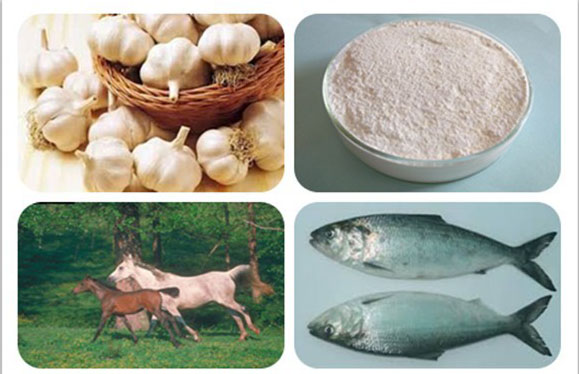Allicin Garlic Powder feed supplement for Poultry&Aqua Feed

75% CHOLINE CHLORIDE LIQUID-Vitamin B
November 4, 2017
Dicalcium Phosphate Feed Grade,DCP feed addictive manufacturer
November 9, 2017What is Allicin ?
Allicin is an organic compound obtained from garlic. It is also obtainable from onions, and other species in the family Alliaceae. It was first isolated and studied in the laboratory by Chester J. Cavallito in 1944. This colourless liquid has a distinctively pungent smell. This compound exhibits antibacterial and anti-fungal properties. Allicin is garlic’s defence mechanism against attacks by pests.
Allicin is not present in garlic unless tissue damage occurs, and is formed by the action of the enzyme alliinase on alliin. It can also be prepared in racemic form by oxidation of diallyldisulfide:
(SCH2CH=CH2)2 + RCO3H → CH2=CHCH2SS(O)CH2CH=CH2 + RCO2H
Alliinase is irreversibly deactivated below a pH of 3; as such, allicin is generally not produced in the body from the consumption of fresh or powdered garlic. Furthermore, allicin can be unstable, breaking down within 16 h at 23C.
Allicin, also known as garlic powder, as feed supplement, which is chemical compound materials made of garlic oil. Having the function of possessing to destroy harmful micro-organisms, and promote the growth, also can flavor the animal food. It has no toxic and side effect and no residue It is widely used for feed industry including poultry, fish, shrimp, crab, and turtle
| Product name | Allicin Garlic Powder |
| Other name | Garlicin ,S-Allyl acrylo-1-sulphinothioate; S-prop-2-en-1-yl prop-2-ene-1-sulfinothioate; Allisatin; Allitrid |
| CAS NO. | 539-86-6 |
| EINECS NO. | 208-727-7 |
| Molecular formula | C6H10OS2 |
| Packing | 25kg/bag 25kg/drum |
| Standard | Feed grade, 5% 10% 15% 20% 25% 50% |
Allicin powder for feed additives
| Item | Company Standard |
| Appearance | Light white or brown yellow powder |
| assay ,% | ≥50 |
| allyl chloride,% | ≤0.5 |
| Lead salt(Pb),ppm | ≤20 |
| Arsenic salt ,ppm | ≤5 |
| Particlesize (pass 20mesh),% | ≥90 |
Allicin, 5% 10% 15% 20% 25% 50%
FUNCTIONS of Allicin Garlic Powder
— It is suitable for poultry, fish, shimp, crab and turtle;
To prevent kinds of infections, prohibit and kill harmful germs and improve animals’ immunization, disease resistance and stress resistance. It has a comparatively prevention effect for some diseases caused by various infections, such as red skin, enteritis and bleeding for fish, shrimp and crab;
— To stimulate animals’ appetite, increase feed-taking amount and promote digestion. It can help purify water quality and reduce endangerment of mosquitoes and flies on nursery ground;
— — To promote animals’ growth, improve their survival rate and egg laying rate, reduce feed material ratio, so as to heighten production capacity and increase the economic benefit. It can increase the laying rate of poultry by 9%, increase the weight gain by 11% for broiler, 6% for pigs and 12% for fish;
— It can reduce the activity of a-cholesterol hydroxyls, thus to lower the cholesterol content within serum, yolk and liver.
Related posts
Concentrate Garlic Allicin Powder Feed Additive For Fish Breeding and Poultry Raising Garlic Allicin is a newly developed and multifunctional feed additive in recent years. It is widely used as an antiseptic and can substitute for antibiotic in feed. Aquatic Feed Additive and livestock ,poultry animal feed additive


